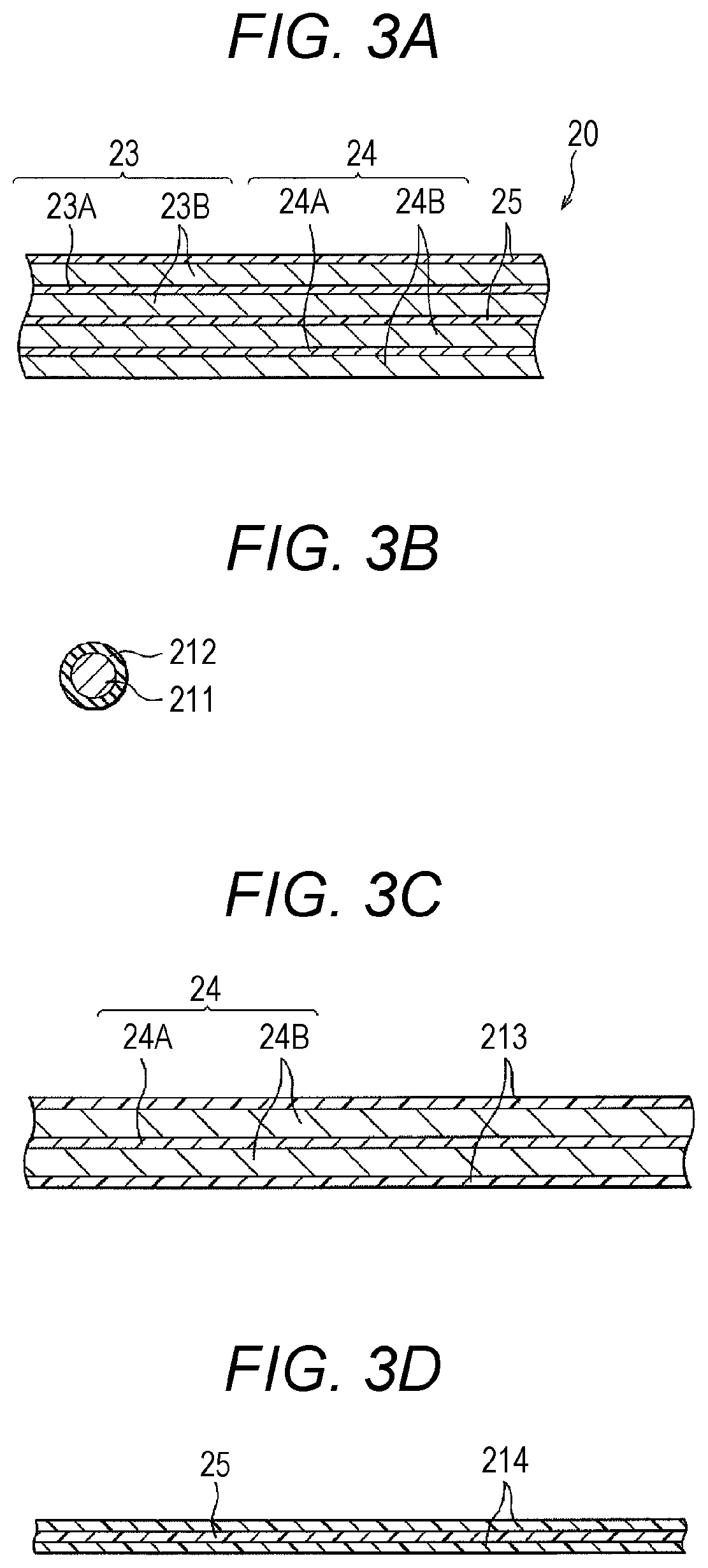Secondary battery charging method, charging control apparatus, and secondary battery
a secondary battery and charging control technology, applied in secondary battery servicing/maintenance, electrochemical generators, transportation and packaging, etc., can solve the problems of reducing the service life of secondary batteries of lithium ions, cycle degradation, and reducing the time required until charging completion, so as to simplify the charging control. , the effect of reducing the time required to complete the charging
- Summary
- Abstract
- Description
- Claims
- Application Information
AI Technical Summary
Benefits of technology
Problems solved by technology
Method used
Image
Examples
example 2c
, and
[0039]FIGS. 16A and 16B are a graph showing cycle characteristics and a graph showing the cycle transition of a charging time in the secondary battery charging method of Example 2A, Example 2B, Example 2C, Example 1A, and Comparative Example 1A, respectively.
[0040]FIG. 17A is a graph showing a relation between a charge voltage and a charge current with respect to a depth of charge at the first cycle in a secondary battery charging method of Example 2D and Example 2E and FIG. 17B is a graph showing a relation between a charge voltage and a charge current with respect to a depth of charge at the first cycle in a secondary battery charging method of Example 2F.
[0041]FIGS. 18A and 18B are a graph showing cycle characteristics and a graph showing the cycle transition of a charging time in the secondary battery charging method of Example 2D, Example 2E, Example 1A, and Comparative Example 1A, respectively.
[0042]FIGS. 19A and 19B are a graph showing cycle characteristics and a graph s...
example 1
[0080]Example 1 relates to the secondary battery charging method according to the first aspect of the present disclosure and the secondary battery according to the first aspect of the present disclosure.
[0081]A secondary battery of Example 1 or a secondary battery of Example 2 to be described later is configured as a lithium ion secondary battery, and specifically, for example, is configured as a flat laminated film type lithium ion secondary battery, and a positive electrode, a separator, and a negative electrode are spirally wound. A schematic exploded perspective view of the lithium ion secondary battery is illustrated in FIG. 1 and FIG. 2A, and a schematic enlarged cross-sectional view taken along arrow A-A of a spirally wound electrode body (structure) illustrated in FIG. 1 and FIG. 2A (a schematic enlarged cross-sectional view taken along a YZ plane) is illustrated in FIG. 2B. Furthermore, a schematic partial cross-sectional view in which a part of the spirally wound electrode...
example 1b
[0126]Next, in Example 1B, specifically, the first predetermined voltage V0 was set to 4.30 V, and the second predetermined voltage VN was set to 4.35 V. The first predetermined voltage V0 is a voltage when a depth of charge (SOC value) became 67%.
[0127]More specifically, in Example 1B, N was set to five. In addition, the value of ΔVn is positive and negative. More specifically, values of Vn-1, ΔVn, Vn, In, ΔIn, and (In−ΔIn) in each constant voltage charging were set as described in the following Table 4. The charge current at the time of constant current charging was set to 2930 mA.
[0128]
TABLE 4nVn−1ΔVnVnInΔInIn −ΔIn14.302930488244224.300.014.312442489195334.310.094.40195397697744.40−0.064.3497748948854.340.014.35488341147
[0129]A relation between a charge voltage and a charge current with respect to a depth of charge (SOC value) at the first cycle is shown in FIG. 9A. Further, a relation between a charge voltage and a charge current with respect to a charging time at the first cycl...
PUM
| Property | Measurement | Unit |
|---|---|---|
| charge current | aaaaa | aaaaa |
| charge current | aaaaa | aaaaa |
| charge current | aaaaa | aaaaa |
Abstract
Description
Claims
Application Information
 Login to View More
Login to View More - R&D
- Intellectual Property
- Life Sciences
- Materials
- Tech Scout
- Unparalleled Data Quality
- Higher Quality Content
- 60% Fewer Hallucinations
Browse by: Latest US Patents, China's latest patents, Technical Efficacy Thesaurus, Application Domain, Technology Topic, Popular Technical Reports.
© 2025 PatSnap. All rights reserved.Legal|Privacy policy|Modern Slavery Act Transparency Statement|Sitemap|About US| Contact US: help@patsnap.com



